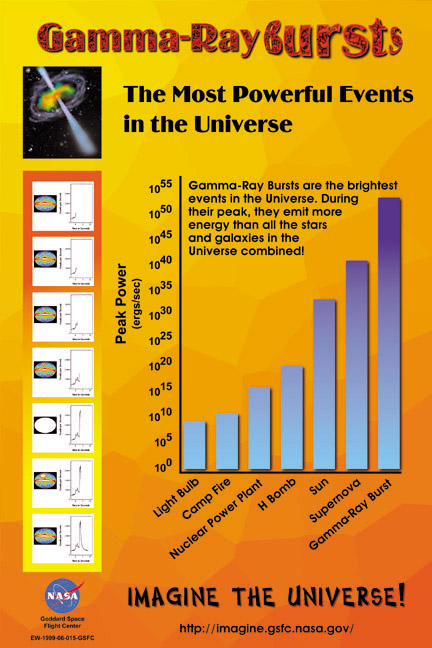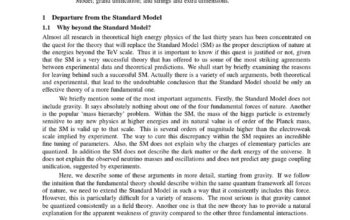Gamma-Ray Bursts Unveiled: The Universe’s Biggest Bangs
Deep within the grand tapestry of the cosmos, gamma-ray bursts (GRBs) illuminate the night with their otherworldly brilliance. These fleeting but extraordinarily potent phenomena resonate with both profound scientific intrigue and the poetic mystique of the universe. Often considered the most energetic explosions known to humankind, GRBs serve as celestial lighthouses, beckoning us to unravel the myriad mysteries of stellar evolution, cosmic evolution, and perhaps, the very fabric of reality itself.
1. Unfurling the Enigma: What Are Gamma-Ray Bursts?
At their core, gamma-ray bursts are sudden, intense bursts of gamma radiation, which is the most energetic form of electromagnetic radiation. Lasting anywhere from mere milliseconds to several minutes, these bursts can emit more energy in a few seconds than the Sun will produce in its entire lifespan. Classically, GRBs are categorized into short-duration bursts, lasting less than two seconds, and long-duration bursts, which can extend up to several minutes. Despite their ephemeral nature, the impact of gamma-ray bursts echoes across the cosmos, inviting ever-inquisitive minds to probe deeper into their origins and implications.
2. Progenitors of Gamma-Ray Bursts: The Stellar Ballet
The stellar ballet from which GRBs emerge is both mesmerizing and chaotic. Long-duration GRBs are predominantly attributed to the cataclysmic demise of massive stars. When these titanic celestial bodies exhaust their nuclear fuel, they undergo a supernova explosion, followed by the formation of a black hole or a neutron star. As a result, jets of highly energetic particles are expelled at nearly the speed of light. In contrast, short-duration GRBs are believed to arise from the catastrophic merger of compact objects, such as neutron stars or the collision of black holes, producing a similar burst of gamma radiation. In both scenarios, the cosmic ballet plays out on a grand scale, intertwining the lives and deaths of the universe’s most massive inhabitants.
3. The Cosmic Symphony: Eavesdropping on GRBs
GRBs are not merely silent explosions; they are the cosmic symphony of the universe’s deepest secrets. The detection of these phenomena necessitated the creation of sophisticated instruments equipped with the capability to perceive the gamma rays that travel vast distances across the universe. Space-based observatories like the Fermi Gamma-ray Space Telescope and the Swift observatory have become our modern-day sentinels, diligently monitoring the skies for these ephemeral signals. Upon detection, rapid-response telescopes can turn their lenses towards the faint afterglow, allowing astronomers to glean critical information about the intrinsic nature of these events.
This afterglow, which can extend into various wavelengths, including x-ray, optical, and radio, sheds light on the conditions surrounding the burst. The identification of the host galaxies and the redshift measurements indicate their distance from Earth, providing further context and anchoring them in the cosmic timeline. Consequently, GRBs serve as valuable tools for astronomers to probe the universe’s evolution, as they act as “standard candles” to measure distances on a cosmic scale.
4. The Implications of Discovery: Cosmic Mermaids?
As researchers deepen their understanding of GRBs, new questions arise, reminiscent of the myth of the mermaid – a blend of curiosity and trepidation. The study of these bursts challenges our conception of the universe’s death throes and births, revealing insights into phenomena such as supernovae, black hole formation, and the synthesis of heavy elements like gold and platinum in the cosmos. These potent events could be the crucibles for forging these vital constituents of the universe.
Moreover, investigating GRBs prompts the contemplation of our place within the cosmos. Could these phenomena play an instrumental role in the genesis of life itself, providing the energetic environment necessary for molecular evolution? The interstellar highway paved by the debris of stellar explosions creates the elements essential for the emergence of galaxies and potential biogenesis.
5. Gamma Rays and the Future: Navigating Cosmic Frontiers
While gamma-ray bursts are awe-inspiring spectacles, they also offer valuable lessons for the future. The potential dangers posed by GRBs to Earth are often debated. A sufficiently close GRB could have catastrophic effects on our atmosphere, stripping away the ozone layer and exposing the surface to detrimental cosmic radiation. However, the likelihood of such an event occurring within a dangerous proximity is minimal, given the vast distances involved in the cosmos.
Nonetheless, ongoing advancements in astronomical instrumentation and observational chemistry will continue to illuminate these bursts, unraveling the tangled threads of cosmic phenomena. As we descend deeper into the quest for understanding these enigmatic explosions, we must remain both vigilant and imaginative, allowing the unfolding narrative of the universe’s biggest bangs to inspire future generations of researchers and thinkers.
6. Conclusion: Embracing the Unknown
In conclusion, gamma-ray bursts stand as a testament to the vibrant, tumultuous nature of our universe. They challenge our understanding of stellar life cycles and stretch the boundaries of cosmic lore. By embracing the unknown and seeking to uncover the secrets of GRBs, we not only expand our comprehension of the cosmos but also foster an eternal inquisitiveness that resonates across epochs. These celestial events remind us of the infinite scale of the universe, where stars die and are reborn, music dances through the ether, and doors to unexplored realms await the intrepid sojourner. As we continue our exploration, we are but humble witnesses to the grand symphony of existence, propelled by the lingering echoes of the universe’s biggest bangs.












